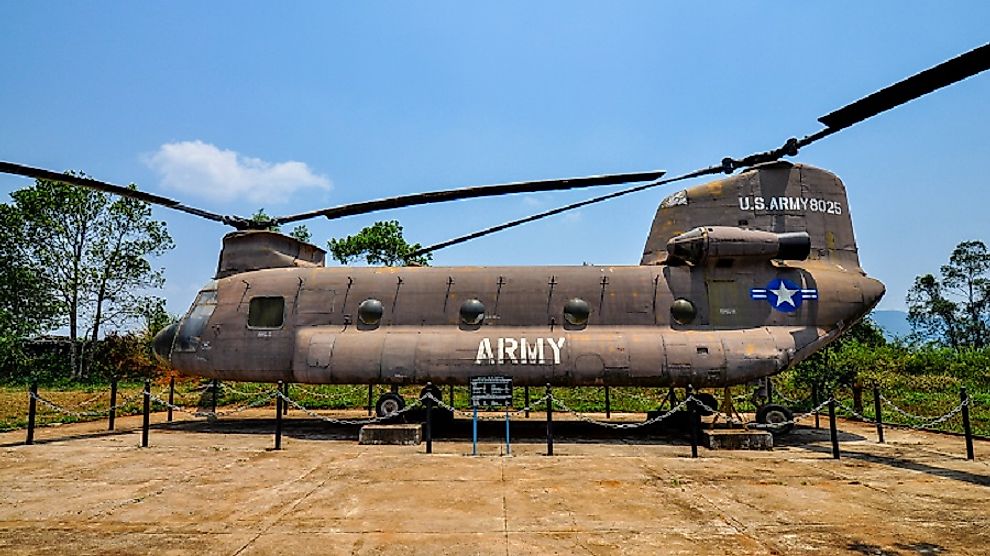The Battle of Khe Sanh: The Vietnam War

5. Background
In 1962 the United States made a military move and established a camp for the Military Command of Vietnam (MAVC). The motives for establishing this camp were to prevent any military infiltration of the enemy from Laos, provision of a base through which patrols could be launched into Laos so as to monitor Ho Chi Minh and finally to act as a defense anchor along the demilitarized zone.
4. Makeup
This battle pitted North Vietnam’s army against the United States Marines and their allies. The American force, combined to total almost 50,000, was led by Army General William Westmoreland and Marines Major General Rathvon Tompkins. The force included Army, Marine Corps, Air Force, and Air Calvary units alike. Opposing them was the outnumbered Vietnam People’s Army forces led by General Võ Nguyên Giáp. Official accounts of the battle are a source of controversy, as both sides have their own very different accounts concerning what actually did occur in the Battle at Khe Sanh. Strategically important, Khe Sanh was located to the south of the demilitarized zone that separated the two warring factions of Vietnam. The Americans specifically emphasized a wide range of arms in the fight, including helicopters, aerial support, regular infantry, snipers, and artillery fire.
3. Description
In the beginning of October of 1967, the North Vietnamese increased their forces in the Khe Sanh area with the addition of two infantry divisions, an armored regiment, and an artillery regiment. The forces of the North Vietnamese army were considerably large, with estimates putting the figure between 20,000 and 30,000 troops. The United States Marine garrison also received reinforcements and, on the 1st of November, 1967, Operation Scotland was signaled. In the middle of January of 1968, it was reported that as many as 6,000 Army troops and Marines were occupying the Khe Sanh combat area and its surrounding territories. Khe Sanh was located on Route 9 of the battle zone and, because of the heavy enemy presence in the nearby areas, the American troops could only get to Khe Sanh by helicopter. On the 20th and 21st of January, the North Vietnamese army launched coordinated attacks on the positions occupied by the American troops. The 6th Battalion, the 2nd Regiment, and the 325th Division of the North Vietnamese army attacked the United States marines at Battle Zone Hill 861. Two hours later, following the attack on Hill 861, the North Vietnamese responded again as they hit the Marine ammunition dump at Khe Sanh. Huong Hoa also came under attack by the NVA as well. The fighting was highly intense, and the MAVC army advisors, Marines from Combined Action Plan, and the South Vietnam’s militia were all drawn into the battle as it escalated.
2. Outcome
The exact number of casualties suffered by both sides during the Khe Sanh battle is very difficult to ascertain, given that in many cases the two warring factions provided their own disparate counts. The United States Marines gave the actual body count of the NVA troops killed to be 1,602, but estimates show that the total number of NVA troops that died was in fact more likely between 10,000 and 15,000. The casualty numbers on the American and South Vietnamese side was, on the other hand, comparatively less, with estimates putting the figures between 2,800 and 3,500 deaths. It is very difficult to ascertain who won the battle, as both sides claimed to have achieved significant strategic goals.
1. Significance
In July of 1968, the United States army destroyed the Khe Sanh Base complex, and subsequently withdrew from the area. Following the withdrawal by the American troops, the North Vietnamese Army moved in and gained control of the entire Khe Sanh area. With the breaking through of the "McNamara Line", meant to prevent North Vietnamese movements into South Vietnam, the North Vietnamese Army now had a better prospects for establishing communication and supply lines further southward.











